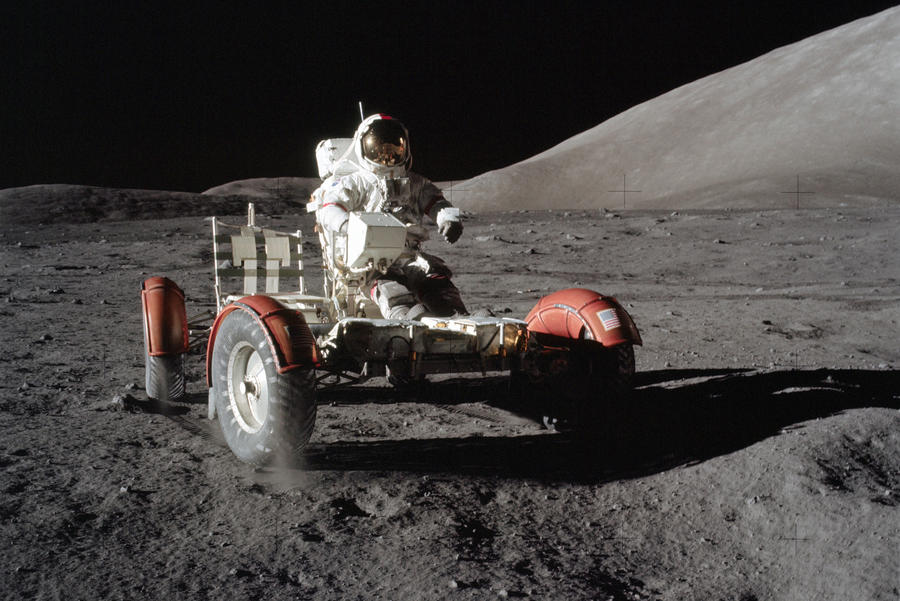The evolution of lunar vehicles
Apollo 17 astronauts traveled 21 miles in the Lunar Roving Vehicle. They drove for five hours and collected 249 pounds of rock samples. Photo: NASA
Fifty years ago, two NASA astronauts became the first people to drive on the moon. When the next astronauts drive on the moon, their vehicles will look very different.
Why you should know: NASA plans to build a station called Artemis Base Camp near the moon’s South Pole, a permanent structure that will provide an outpost for deep space exploration.
NASA’s plans will require two types of vehicles:
- The Lunar Terrain Vehicle, an unpressurized rover that will transport suited astronauts around base camp.
- The Pressurized Rover, a high-tech pressurized “motorhome” for exploratory trips from base camp that last up to 45 days.
History: The Lunar Roving Vehicle (LRV) accompanied Apollo 15, 16 and 17. With a range of 40 miles, LRV allowed suited astronauts to explore four times more terrain than previous missions.
In 2007, NASA created an unpressurized rover prototype called Chariot, a multi-purpose vehicle to haul cargo, move lunar soil and transport suited astronauts. It could be driven or operated remotely from Earth.
In 2008, the rover engineering team developed a prototype cabin and mounted it on the Chariot rover.
From 2008 to 2011, NASA developed and tested two SPR prototypes on a volcanic landscape that resembles the moon’s terrain. The cabin interiors were reconfigured daily due to limited space. Crews operated and lived in the SPRs to gather data that was used to increase visibility, comfort, efficiency and control.
Upgrades included:
- Cockpit cameras to improve docking, scientific observation and “crabbing,” or driving sideways to avoid obstacles.
- Cruise control to reduce wrist and arm fatigue.
- Cabana covers to protect space suits from dust and debris.
- Lower observation bubble windows to better examine outside elements.
- Additional interior space for the crew's routine exercises.
Results: Through repeated human-in-the-loop testing, the team improved habitability standards for astronauts by enhancing the vehicle’s stowage system and sleep station. They reduced reconfiguration time to less than five minutes, and in some cases, eliminated reconfiguration all together.
Robert Lee Howard, Jr., a Ph.D. at the NASA Johnson Space Center and Harry Litaker, Jr. of Leidos, published findings from the field tests.
From the source: “We wrote about what we learned in those early years so new design teams can learn from our successes and avoid our mistakes,” said Howard and Litaker. “Our goal is to help teach a new generation of engineers how to improve designs at lower costs.”
Looking ahead: In 2021, remaining members of the 2008 team partnered with new engineers to apply field study learnings to preliminary Artemis rover designs.
Please contact the Leidos media relations team for more information.

